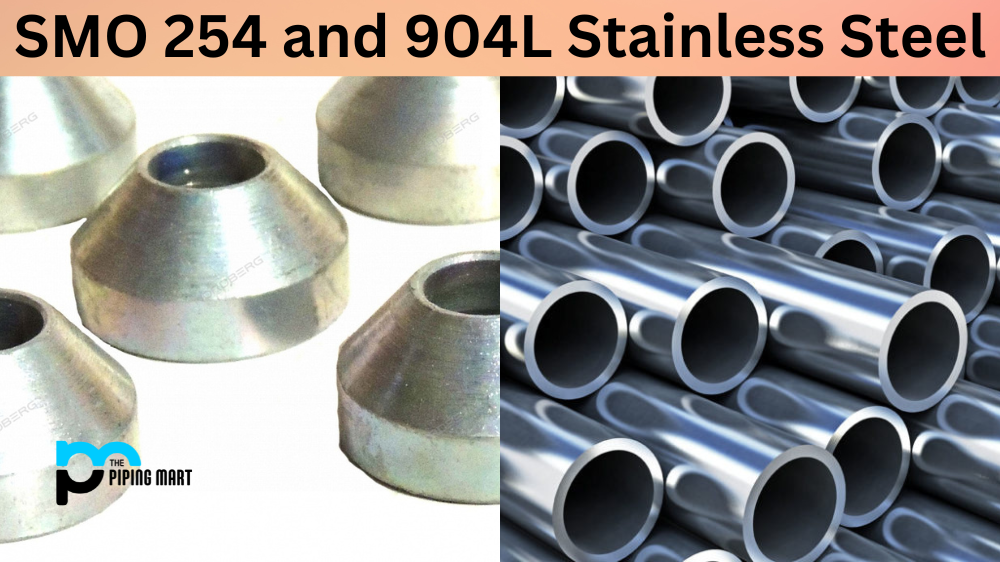Are you looking for a stainless steel alloy that can provide superior corrosion resistance, strength, and flexibility? You should consider the differences between stainless steel grades 204 and 202. While both types of steel are available in various shapes and sizes, some key distinctions may help you decide which type is best suited for your needs. Let’s take a closer look at what sets these two alloys apart.
Difference Between Stainless Steel 204 and 202
The chemical composition of stainless steel determines its properties and performance characteristics. Grade 204 stainless steel contains significantly higher levels of chromium than grade 202 (18% vs 14%). This increased level of chromium provides improved corrosion resistance, making the 204 grade the ideal choice for applications where exposure to corrosive substances is likely. Additionally, grade 204 contains higher levels of nickel than grade 202 (5-8% vs 4-7%), making it more resistant to oxidation and scaling at elevated temperatures.
Mechanical Properties
Grade 204 stainless steel has excellent hardness and strength properties and good ductility. It is capable of deep drawing due to its low work hardening rate. In comparison, grade 202 stainless steel has slightly lower mechanical properties than grade 204 in hardness and tensile strength. However, it offers better formability due to its higher elongation rate compared to grade 204.
Cost Considerations
When it comes to cost considerations, grade 202 generally costs less than grade 204 due to the relatively lower amount of raw materials used in production. Additionally, because it has a slightly lower mechanical property profile than grade 204, it is usually easier to work with during fabrication processes such as forming or welding, which may also result in cost savings for manufacturers.
Composition
The main difference between stainless steel grades 204 and 202 is the composition. Grade 202 has high manganese content, whereas grade 204 has lower manganese content. This gives grade 202 stainless steel a slightly higher yield strength than grade 204 stainless steel.
Corrosion Resistance
Both grades of stainless steel have excellent corrosion resistance; however, grade 202 stainless steel is slightly more resistant to corrosion than grade 204 stainless steel. This is due to the higher manganese content in grade 202 stainless steel.
Heat Resistance
Grade 204 stainless steel is more heat resistant than grade 202 stainless steel. This is due to the lower carbon content in grade 204 stainless steel.
Magnetic Properties
Both grades of stainless steel are non-magnetic; however, grade 202 stainless steel is slightly more magnetic than grade 204 stainless steel. This is due to the higher manganese content in grade 202 stainless steel.
Weldability
Both grades of stainless steel are weldable; however, grade 202 stainless steel is slightly more weldable than grade 204 stainless steel. This is due to the lower carbon content in grade 202 stainless steel.
Cost
Grade 202 stainless steel is cheaper than grade 204 stainless steel due to the lower manganese content.
Conclusion:
In summary, grade 204 stainless steel offers superior corrosion resistance while providing good mechanical properties, including hardness and ductility. It is especially suitable for applications where exposure to corrosive substances is likely such as in food processing or medical equipment manufacturing industries. On the other hand, if cost savings are paramount, grade 202 may be more suitable since it tends to be easier to work with during fabrication processes leading to more affordable product costs overall. Ultimately, when selecting between these two grades, it’s essential to consider their similarities and differences so you can make an informed decision about which type will best suit your application needs.

A passionate metal industry expert and blogger. With over 5 years of experience in the field, Palak brings a wealth of knowledge and insight to her writing. Whether discussing the latest trends in the metal industry or sharing tips, she is dedicated to helping others succeed in the metal industry.




